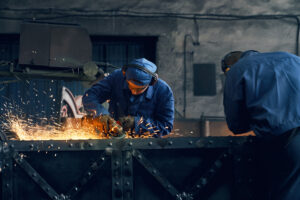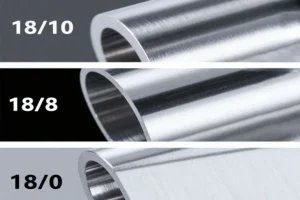In the world of metals, few comparisons are as common or as misunderstood as carbon steel vs stainless steel. Many articles repeat the same traditional explanations, but the real decision between these two materials requires a fresh perspective. Modern industries now demand performance, lifespan, environmental strength, and cost efficiency.
If you are choosing between carbon vs stainless steel for fabrication, engineering, design, or machinery, you are not simply picking a metal. You are selecting how your final product will function, age, and survive in real working conditions.
This is a completely new and practical look at carbon steel versus stainless steel, focused on real world insights rather than textbook definitions.
1. The Real Question Is Not Which Metal Is Better, It Is What Conditions Will It Face
Manufacturers often ask, “Is stainless steel better than carbon steel?” However, no metal is universally superior. The more accurate question is:
What type of environment and performance demands will the metal experience every day?
Imagine you are creating
• a cutting tool that faces high friction
• a railing installed near the sea
• a machine part exposed to continuous impact
• food grade equipment that must stay hygienic
• architectural elements visible to customers
Each situation requires a different type of strength. Instead of comparing stainless steel vs carbon steel as competitors, think of them as specialists, each one designed for a different job.
2. Carbon Steel, The Muscle Metal Designed for Force and Precision
Carbon steel has long been the foundation of industrial strength. What many do not highlight is the reason it performs so well.
Why modern industries continue to rely on carbon steel
• It responds very well to heat treatment
• It can be engineered to become extremely tough or impressively flexible
• Fabricators appreciate its predictable performance
• It provides strong results at an affordable cost
Carbon steel has a bold character. It does not hide its weaknesses, especially its tendency to rust without proper protection. Yet its strengths make it ideal for any project that requires rigidity, impact resistance, or precise shaping.
Typical applications include
• cutting tools and blades
• automotive pressure parts
• structural supports
• industrial machine components
• welded or bent parts that need strength
The story of carbon steel is not only about carbon content. It is about reliability in environments where force and mechanical stress dominate.
If carbon steel symbolizes power, stainless steel represents endurance. Its blend of chromium and other alloys allows it to defend itself naturally against moisture, chemicals, and contamination.
3. Stainless Steel, The Guardian Metal Created to Resist the Elements
During this comparison, many professionals also explore specific stainless grades to better understand performance differences, such as the distinction highlighted in 18 8 vs 18 10 stainless steel, which helps manufacturers decide how composition affects durability and corrosion resistance. This deeper exploration supports smarter material choices, especially when selecting stainless steel for long term use.
Why stainless steel leads today’s innovative industries
• It offers a clean, premium appearance
• It resists stains, moisture, and many corrosive elements
• It supports hygiene standards in medical, food, and chemical sectors
• It performs exceptionally well outdoors and in hard to control environments
From modern kitchen designs to advanced pharmaceutical machinery, stainless steel offers a rare combination of aesthetics and resilience.
It is the material of choice whenever environmental exposure becomes the primary threat.
4. A New Comparison Method, Understanding the Environment Factor
Instead of outdated pros and cons lists, imagine placing both metals in different environments. The conditions decide the winner.
High moisture or coastal conditions
• Winner, stainless steel
It protects itself without any coating.
High pressure or high impact industrial use
• Winner, carbon steel
Its toughness exceeds that of most stainless grades.
Food, medical, or chemical facilities
• Winner, stainless steel
Cleanliness and hygiene are essential.
Budget sensitive large scale projects
• Winner, carbon steel
It provides strength at a lower price.
Outdoor structures
• Winner, depends on purpose
• Stainless steel for exposed and decorative surfaces
• Carbon steel for coated structural applications
This environment based comparison gives clearer decision making than traditional definitions.
5. The Performance Curve, How Each Metal Ages Over Time
A topic rarely discussed is how these metals behave after years of use.
How carbon steel ages
• It develops rust or patina if not protected
• It responds effectively to heat treatment and hardening
• Its structural strength remains dependable
• It requires occasional recoating or oiling
Its aging pattern is mechanical rather than visual.
How stainless steel ages
• It maintains its shine and clean appearance
• It does not rust under normal conditions
• It may show fingerprints or minor scratches
• It retains its aesthetic value for years
Its aging pattern is aesthetic rather than structural.
This difference heavily influences long term quality.
6. Feel and Finish, The Emotional Side of Carbon Steel vs Stainless Steel
Every material carries an emotional impression.
Carbon steel has an industrial personality
• Raw, bold, and dense
• Darker tones that communicate strength
• A serious, engineered appearance
Stainless steel has a refined personality
• Clean, reflective, and polished
• Sharp lines and premium texture
• A modern look that appeals to designers
In consumer facing products, appearance alone can determine the final material choice.
7. Cost Compared to Value, A Smarter Way to Measure Price
Carbon steel value
Instead of asking which metal is cheaper, ask which one delivers more value during the entire lifespan of the product.
• Lower initial cost
• Excellent mechanical strength
• Higher maintenance requirements over time
Stainless steel value
• Higher upfront investment
• Very low maintenance
• Longer operational life in harsh environments
The choice between stainless steel vs carbon steel often depends on whether the priority is initial savings or lifetime value.
8. Final Verdict, Two Materials With Two Distinct Purposes
After a practical, modern comparison of carbon steel vs stainless steel, the conclusion becomes clear:
Choose carbon steel when strength, impact resistance, machinability, and affordability are the primary goals.
Choose stainless steel when corrosion resistance, appearance, hygiene, or long term durability are essential.
Both metals offer exceptional performance, but each one is designed to excel under different conditions. The best choice depends entirely on your project’s environment and purpose.






